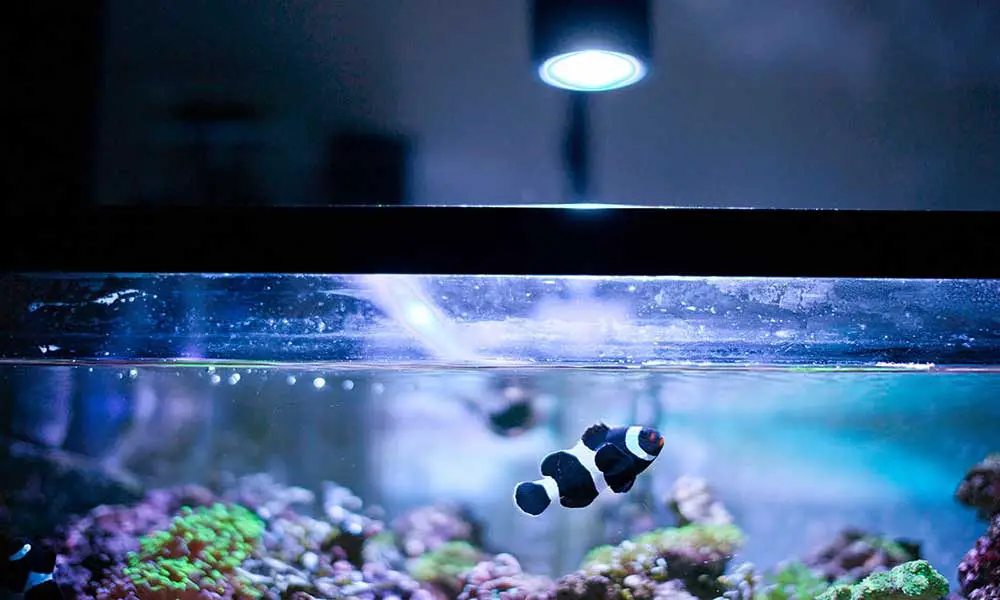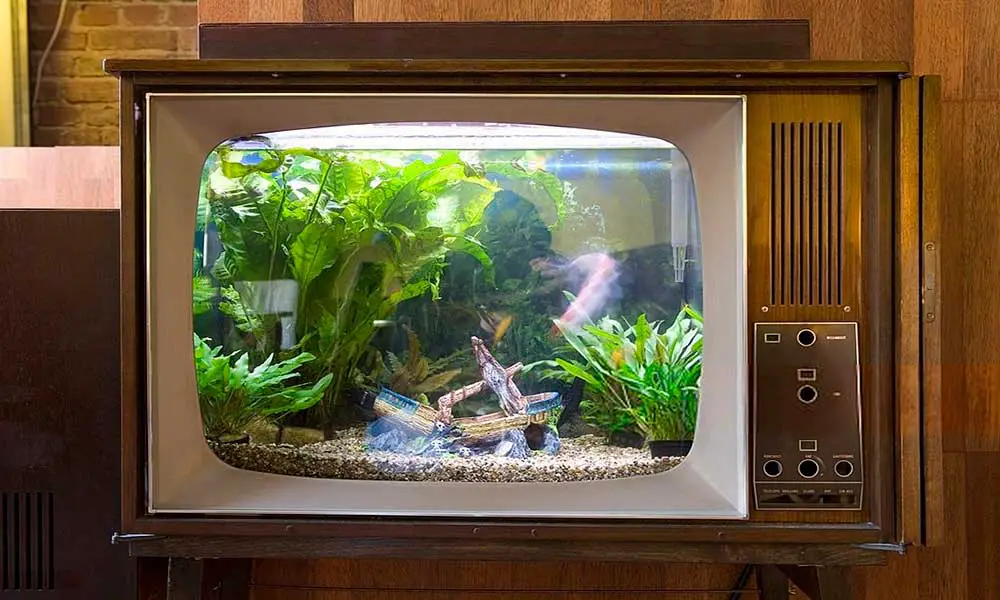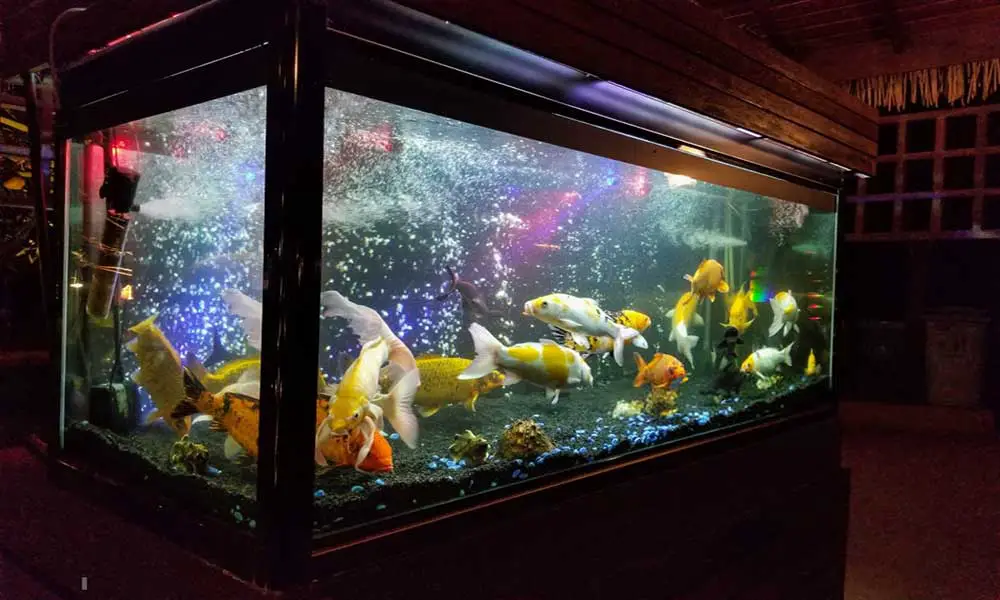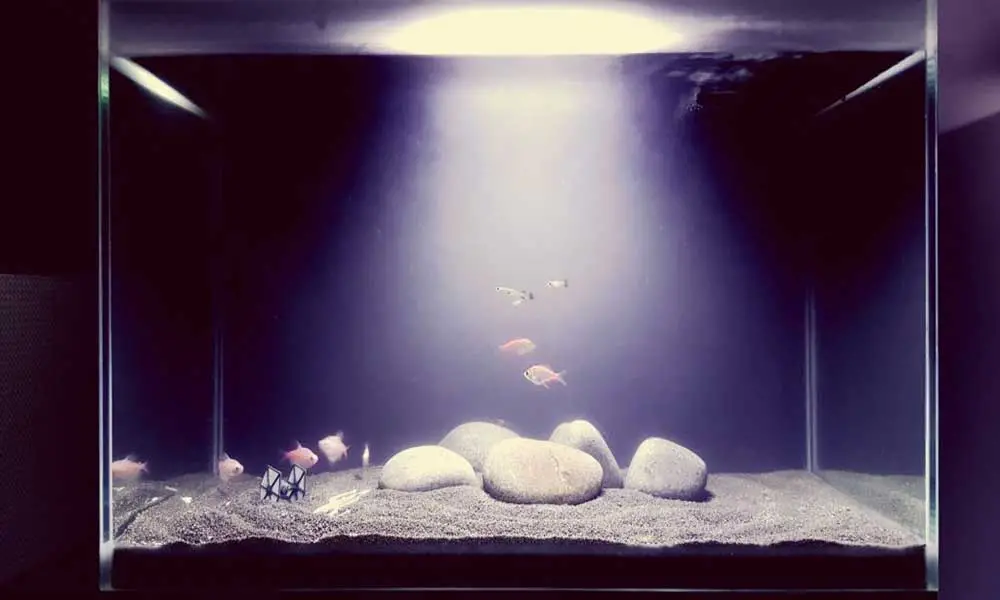Products recommended in this post contain affiliate links. If you buy something through our posts, we may receive a commission at no extra charge to you. See our full disclosures here.
Got a brand new aquarium light but not sure how long to leave it on?
Well, here’s all you need to know about the aquarium lighting. Let’s get your aquarium lit up!
Do fish need light in an aquarium? YES! Proper aquarium lighting is very essential to your fish and aquatic plants. It brings your aquarium to life. Besides, beautiful aquariums can be gorgeous home attractions. “For how long should I my aquarium light on?” Generally, 8 to 12 hours of light is sufficient.
Aquarium lights illuminate fish colors, make it easier to spot tank problems and regulate your fish's sleeping and eating. However, it is important to realize that different aquariums have different lighting needs.Did You Know?
The health of fish is closely connected to the intensity of the overhead light, types of light, and sudden changes from dark to light and vice versa.
Heat producing lights

The incandescent, VHO–fluorescent and metal halide lights produce a lot of heat. They are affordable and versatile, but it is not advisable to leave them on too long. The smaller the aquarium, the higher is the temperature rise. Leaving the lights on for extended periods or even overnight could prove deadly to your aquarium’s inhabitants. You must frequently monitor the water temperature to get an idea of how long you can safely keep these lights on.
Generally, about 5 to 6 hours is advisable for 10-gallon aquariums.
Moreover, the tenure also depends on your house’s temperature, aquarium location in the house, the size of the aquarium and the kinds of fish and plants.
VHO (very high output), compact and metal halide lights are generally used by those hobbyists who are experienced. They also add ventilators to their lighting systems to maintain a consistent temperature.Cooler lights
Normal output fluorescent lights come under the category of cool lights. They are easily available, inexpensive and produce less heat. Hence, they can be safely left on even for long periods and are a great choice of aquarium lighting for hobbyists.
How long to leave aquarium lights on a “planted tank”

Let’s move on to the lighting schedule for a planted tank.
Most planted aquariums need 8 hours of light. You must ideally set your lighting period for not longer than 6 hours in newly planted aquarium set-ups. Another concern in a planted tank is the high chances of algae formation. During the first month, make the lighting period shorter. This keeps away algae while your plants grow in.
Still not sure how much time does your aquarium needs? Don’t worry, here's an exclusive aquarium light schedule just for you!Aquarium Type | Time Required |
|---|---|
Average Aquarium | 10 hours daily |
Tropical fish and plants | 12 hours daily |
Cold-water fish and plants | 8 hours daily |
No plants | less light needed |
Now if you neighbour asks you, “how long should I leave my aquarium light on?” You have got his back. Thanks to this comprehensive guide!
Factors that Determine the amount of light Needed
In order to keep the fish and plants in your aquarium healthy, you need to match their natural lighting conditions as closely as possible with the aquarium lighting. Now, you must be wondering, what is the right amount of light needed? Well, there’s no specific measure.
Following are the factors determining the amount of light needed in your aquarium:1. Size Of The Aquarium
How big is your aquarium? That’s the major factor determining the amount of light needed. Not sure yet? Let’s give you a quick brief. The water holding capacity of your aquarium determines its size. The bigger the aquarium, the more amount of light would be needed.
Too little light can stunt the growth of your fish and plants while too much light can cause the growth of excessive algae. Therefore size matters!
2. Freshwater or saltwater aquarium?
Aquarium lighting requirements are different for different types of tanks. FO (Fish Only) saltwater tanks require the least lighting. For the most part, lighting for a fish-only tank is just to enhance the aesthetics of your aquarium. A vast majority of saltwater fish and invertebrates (crabs, hermit crabs, and shrimps) don't really require much light at all for them to go about their lives.
On the other hand, the community of fish coming from rivers, streams, or clear lakes is used to the bright sunlight and warming rays of rainforest climate.Did You Know?
Most tropical fish require about 8-10 hours of light. However, there are some who prefer staying in the dark or less lighted areas for most of their lives. Spooky!
3. amount of ambient light
The amount of aquarium lights typically depends on how much ambient light is already present in the room. There might be possibilities of no additional lighting at all. For example, if your aquarium is in a bright south-facing sunroom with lots of windows you hardly require any lighting. Likewise, the same applies to an active family room where the ceiling lights and lamps are on most of the time.
However, ambient room lighting is an indirect light for your aquarium. Therefore, you would need to run aquarium lights for at least a few hours each day. But a room with good ambient light does NOT NEED 8 to 12 hours of aquarium lights.4. level of algae formation
Observing excess algae in your tank? Too much light could be a contributing factor to this. Aquarium’s higher exposure to light can cause excessive algae growth. To control the algae growth, you must reduce the light exposure tenure to 8 hours or less. Thus, monitoring algae levels can help you determine the ideal hours to leave your aquarium lights on.
5. the species of fish in your aquarium
There’s a reason why different fish and plants grow in different places. How much light do tropical fish need, depends on the habitat they belong to. Similarly, different aquarium specimens will have different light requirements to thrive. Once you decide the species you'd like to house, you can determine their lighting needs better.
Pro Tip
All fish need periods of darkness, and turning the lights off at night will help you mimic your pet's natural environment.
Effect of aquarium light on Algae Bloom - explained

Fed up of unwanted algae growth in your aquarium? You need to read this!
How Long Should I Leave My Aquarium Light On? Well, this question of yours is directly proportional to the algae growth in your aquarium.
Algal bloom stands for an increased, rapid accumulation of algae in tank water. The major cause of this is long durations of light in your aquarium.What Causes an Algal Bloom?
Algal blooms usually occur in tanks that have excess light. Besides, other factors like nutrients also promote this.
Algae consume light, nitrogen, and phosphorus for growth and reproduction. Excessive amounts of these facilitate rapid algae growth. As algae booms and busts, the dead algae can decrease considerable amounts of dissolved oxygen in the water and can suffocate the fish. You definitely don’t want that!Did You Know?
A Continental Airlines flight from the U.S. was the first commercial passenger trip powered by algae biofuel
Preventing Algae Blooms
1. Light
Avoid keeping your aquarium near a window or transparent glass door. Aquarium lights should be turned off after 8 hours.
2. Nutrients
Overfeeding your fish can result in high ammonia and phosphate levels. Besides, using tap water with high phosphates fuels algae growth. Fish wastes that build up in the water also provide extra nutrients for algae. Therefore, you must keep a check on these and set a regular maintenance schedule.
Does light cause an increase in the heat of the aquarium?
The right lighting in your aquarium can improve your pet’s quality of life and ensure their well-being. However, many lights produce heat, and sometimes a lot of it. You must be careful!
Lightings such as incandescent, VHO-fluorescent, and metal halide produce heat. In smaller aquariums, they may raise the water temperature, which might, at times kill your fish and plants. If you use one of these lights, make sure to monitor the water temperature constantly, and avoid leaving the lights on overnight. You may also use automatic lights that turn off after a pre-set tenure.Video Introduction
A word from your philanthropist
Unlike plants, fish do not tend to have a biological need for light, hence require less. 10 to 12 hours of light per day is sufficient for them. Fish needs rest and sleep at night so the lights should be preferably turned off. You should never leave the lights on for 24 hours at a time.
Aquarium lighting is both a design feature and a practical necessity these days. A well-lit aquarium makes an important element of room decor. Besides, both the fish and the live plants in your aquarium require light to thrive. Determining how much light your fish and plants need is in your hands.Top Editor's Choice on Aquarium Light
[amazon bestseller="Aquarium Light" filterby="price" filter="30" filter_compare="more" filter="available" orderby="percentage_saved" order="desc" template="list" items="10" tracking_id="tnk0c-aawp-cro-b-20"]Subscribe to our Newsletter!
Join our mailing list to receive the latest tips and news of our blog.



 Check Offer Prices [Amazon]
Check Offer Prices [Amazon]
